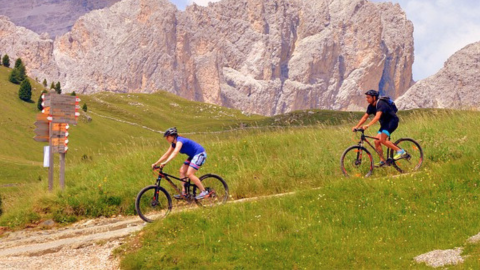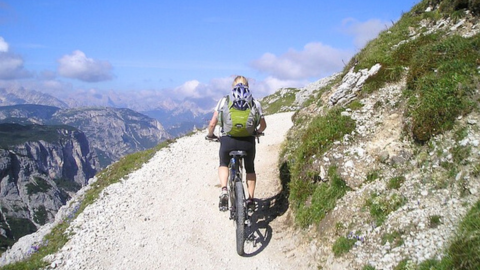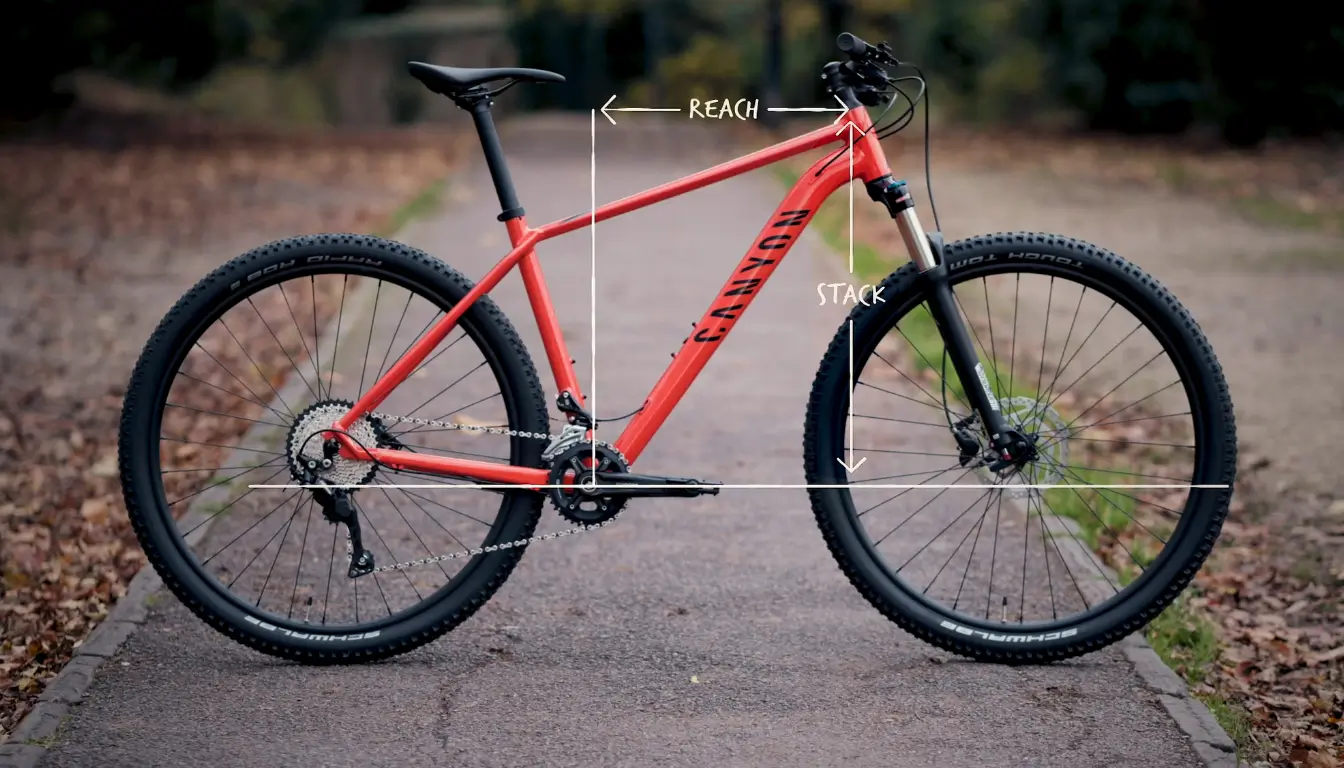Seats are adjustable with a lever, and bicycle brakes are similar to cars. Mechanical gears and so much more have been introduced to the biking world.
Mountain bikes have evolved significantly over the years. Good or bad, we’ve seen plenty of change, especially in the last ten years. Mountain bikes have gotten lighter, have way more reach than before, have space to carry extra weight, and so much more.
This got us thinking, What would happen if our fellow engineers never wanted to change? Would we have so much upgraded tech?
Feeling nostalgic, we’ve posted an in-depth post about how far we’ve come. Read along to discover the differences between a retro MTB and a modern one.
How Did Progressive Geometry Start?
Ever since the old times, when we lived and breathed Y2K, there was a debate between riders, going uphill and downhill.
Going uphill meant mountain bikes having no angles, no reach or travel, not to mention riding in an elevated surface drained riders. Going downhill was the exact opposite of uphill.
Bikes had too much travel and super heavy frames, and each bike was over 40 pounds. Nowadays, we can’t even imagine an MTB being over 30 pounds. With heavy bikes, many riders lacked control while going downhill, even the pros.
Looking back, we’re glad bikes aren’t as heavy anymore. It put riders at serious risk. Also, hey, we can modify almost any part of a mountain bike now. This wasn’t possible back in the day.
Full Suspension Bikes
After seeing the problems and through thousands of trials and errors, bike engineers made full-suspension mountain bikes with carbon fiber frames. The cherry on top were the hydraulic, mechanical brakes, lighter forks, and drivetrains.
Adding all these changed the entire biking game. The more lightweight frames gave riders stability and security over their bikes, and being confident about your MTB is important.
Adding travel overall on bikes helped too.
Does Mountain Bike Geometry Matter?
In short, yes, mountain bike geometry matters. We will get into details about how.
Take the Santa Cruz Nomad, for example; the 2011 version of the MTB had a 67° head tube angle, whereas the 2021 version has 64°. The head tube angles have decreased by 3 degrees.
The lower head tube angle helps make the rider feel like they are going with the wheels, not on top of the bike. This helps in a better connection of the rider with the bike, ultimately enhancing control.
Besides, head tube angles below 65 degrees are great for speed if you ride on rough trails often. It allows comfort, power, and speed.
Another example of bike geometry affecting mountain biking is reaching. Take the Santa Cruz Nomad as an example; again, the reach of the 2011 version is 383mm, and the 2021 one is 450mm.
That is a 67mm increase in reach over ten years. We all know the more extended the reach is in a mountain bike, the longer the wheelbase is, and therefore, the more stability it has.
Now, a 27-inch wheel is perfect for an average person, but what if you’re short or prefer a less wide wheelbase? The companies realized this too and introduced the holy modifying options.
If you take a retro MTB, you’ll notice you don’t have room for adjustments, but if you take a modern mountain bike, you can replace things as minor as drivetrains.
. Back in the day, professionals had to spend thousands of dollars purchasing new bikes just because they couldn’t make readjustments. Thankfully, we now don’t have to speed $5000 on a professional bike just because we can’t adjust the fork.
What are the Things that Changed Bike Geometry?

Bike geometry has changed drastically over the years. The manufacturer started small but now you can change almost everything. It gives the riders the freedom to add or cut off parts according to their needs. Here are the things that changed bike geometry forever:
Frames
The frames have gotten sleeker over the years. Most bike frames are not made out of full metal anymore as they add weight and don’t allow the bike to move as freely as a frame made out of carbon fiber.
Handlebars
Handlebars have gotten wider and bigger over the years. Riders have a stronger grip on their bike, and a wider handlebar allows more comfort than shorter ones.
Wheels
If you’ve ridden a retro MTB, you’ll notice how almost all the mountain bike wheel sizes were 26 inches. This allowed little to no customizable freedom for riders.
It didn’t matter how tall or short you were; you just had to roll with it. Most mountain bikes have larger wheels; you can have 27.5 or 29-inch wheel sizes or even 23-inch wheels according to your needs. A wider wheel will go through bumps better than a small wheel.
Seats
Retro mountain bikes didn’t have adjustable seats. You’d have to ride through the same seats you bought it with. Modern MTBs allow you to re-adjust your seats by making them go up and down with a switch.
This was a major turn for seat posts as this change was needed badly.
Suspension
Travel didn’t increase too much compared to others. But the suspension has increased significantly. There were barely any full-suspension MTBs available back then, but now you find good suspension on any bike.
The suspension is no longer just a swirly plastic thing; it’s now made of premium parts and provides smoother compression.
Pedals
Pedals used to play a part in adding weight. But with technology, you can have clipless pedals with your bike, which not only cuts weight but makes you faster.
Brakes
Disc brakes on MTBs have been a game-changer. Mountain bikes used to use rim brakes before disc brakes were introduced. They weren’t bad considering their time, but they did require a lot of strength from the rider, and after pressing the brakes, it would take some time for the bike to stop.
Modern MTBs have disc and hydraulic brakes, which is convenient and prevent accidents because now you can press your brake, and your bike will be stopped. It doesn’t take much strength, and you don’t have to worry about your brakes failing.
The Comparison: Retro vs. Modern

To finish it off, we took a couple of bikes for a test and recorded their differences. We put them side by side for you to see how bike geometry has changed over time. We don’t want you to get confused, so tables have been made for each bike (retro and modern).
| Santa Cruz Nomad (Retro) | Santa Cruz Nomad (Modern) |
| Wheels: 26” | Wheels: 27.5” |
| Head Tube Angle:67° | Head Tube Angle: 64° |
| Reach: 383mm | Reach: 450mm |
| Weight: 29 lbs | Weight: 34 lbs |
| Mondraker Foxy (Retro) | Mondraker Foxy (Modern) |
| Wheels: 26” | Wheels: 29” |
| Head Tube Angle:68° | Head Tube Angle:66° |
| Reach: Not listed | Reach: 470mm |
| Weight: 32 lbs | Weight: 28.5 lbs |
That is quite the difference if you ask us. Especially the change in wheels and reach. Show how far the community has come.
Conclusion
Mountain bikes have gone through a massive evolution over the years. Progressive geometry started when manufacturers themselves identified the problems and invented solutions. Modern bikes have changed the wheels, frames, seats, etc.,
Almost everything in an MTB is customizable now. Mountain bike geometry has changed the biking game forever.

I am Ryan Ford, a mountain biking enthusiast who loves to explore the outdoors. I also like to go on adventures with friends and anything else that involves being outside. I love my bike because it gets me out of the house and gives me an opportunity to enjoy nature.

